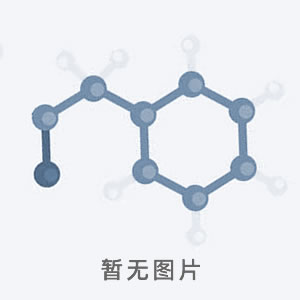本网站销售的所有产品仅用于工业应用或者科学研究等非医疗目的,不可用于人类或动物的临床诊断或者治疗,非药用,非食用。
Recombinant Human SPARC
英文名:
Cas号:
Cas号:
检测信息查询

| 货号 | 规格 | 货期 | 库存 | 价格 | 会员价 | 订购 |
| 1308132799-10 μg | 0 | ¥1800 | ||||
| 1308132799-50 μg | 0 | ¥3800 |
| 别 名 | |
| Cas号 | |
| M D L | |
| 分子式 | |
| 分子量 | |
| 产品参数 | |
| 性状 | Recombinant Human SPARC 是Ca+2 结合的糖蛋白,与形态发生、重塑、细胞迁移和增值相关。
Synonyms rHuSPARC; BM-40; Osteonectin ; 重组人的富含半胱氨酸的酸性蛋白 Species Human Source E. coli Accession P09486 Gene ID 6678 Molecular Weight Approximately 36.1 kDa AA Sequence MSYYHHHHHH DYDIPTTENL YFQGAMGSAP QQEALPDETE VVEETVAEVT EVSVGANPVQ VEVGEFDDGA EETEEEVVAE NPCQNHHCKH GKVCELDENN TPMCVCQDPT SCPAPIGEFE KVCSNDNKTF DSSCHFFATK CTLEGTKKGH KLHLDYIGPC KYIPPCLDSE LTEFPLRMRD WLKNVLVTLY ERDEDNNLLT EKQKLRVKKI HENEKRLEAG DHPVELLARD FE Biological Activity The ED50 is <3.0 μg/mL as measured by its ability to inhibit the cell growth of Mv1Lu mink lung epithelial cells, corresponding to a specific activity of >333 units/mg. Appearance Lyophilized powder. Formulation Lyophilized after extensive dialysis against PBS, pH 7.4. Endotoxin Level <1 EU/μg, determined by LAL method. Reconstitution Reconstitute the lyophilized recombinant Human SPARC (rHuSPARC) to 0.1-1.0 mg/mL using sterile distilled water or aqueous buffer containing 0.1% BSA. Storage & Stability Lyophilized recombinant Human SPARC (rHuSPARC) is stored at -20°C. After reconstitution, it is stable at 4°C for 1 week or -20°C for longer. It is recommended to freeze aliquots at -20°C or -80°C for extended storage. Shipping Room temperature in continental US; may vary elsewhere. Background SPARC (secreted protein, acidic and rich in cysteine) is the founding member of a family of secreted matricellular proteins with similar domain structure. SPARC shows context specific effects, but generally inhibits adhesion, spreading and proliferation, and promotes collagen matrix formation. For endothelial cells, SPARC disrupts focal adhesions and binds and sequesters PDGF and VEGF[1][2]. |
| 贮存 |
- Recombinant Mouse Stromal-Cell Derived Factor-1 alpha/CXCL12
- Recombinant Rat Stromal-Cell Derived Factor-1 alpha/CXCL12
- Recombinant Human SDF-1 beta/CXCL12
- Recombinant Mouse Sonic Hedgehog (CHO-expressed)
- Recombinant Human SPARC
- Recombinant Human TARC/CCL17
- Recombinant Mouse TARC/CCL17
- Recombinant Human TECK/CCL25
- Recombinant Human Trefoil Factor-3

 小程序扫码下单
小程序扫码下单

 沪公网安备 31012002003054号
沪公网安备 31012002003054号